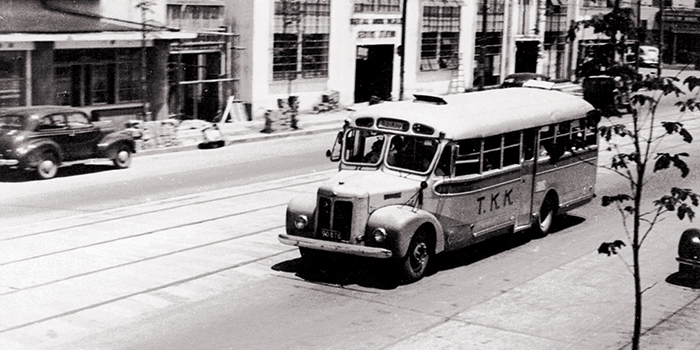After World War II most production had ceased due to damage inflicted during air raids. The company recognized the need for trucks in post-war reconstruction, however, and set about to restart production as quickly as possible.
Despite this determination, arranging the necessary materials and parts would prove to be difficult while a more pressing issue was the lack of food for employees and their families. It was then that the decision was made to make and sell frying pans and pots using the steel and aluminum in stock with the objective of providing employees with a salary.Never losing sight of the vision to produce trucks, the company started making plans to make trucks and bulldozers in November, three months after the war had ended.Employees went wherever they could to obtain the necessary parts and started repairs and maintenance of production machinery at the Kawaguchi Plant. Production resumed in January 1946 with the 6-ton TT9 model truck, the company’s first post-war vehicle, and engine production recommenced in March.

The bus employed by Tokyo Metropolitan Government
Recognizing the importance of buses as a popular mode of transport among the people, the company started production of a diesel bus in 1947. This bus was rated highly for its outstanding fuel efficiency and was quickly taken up by the Tokyo Metropolitan Government and other areas.
